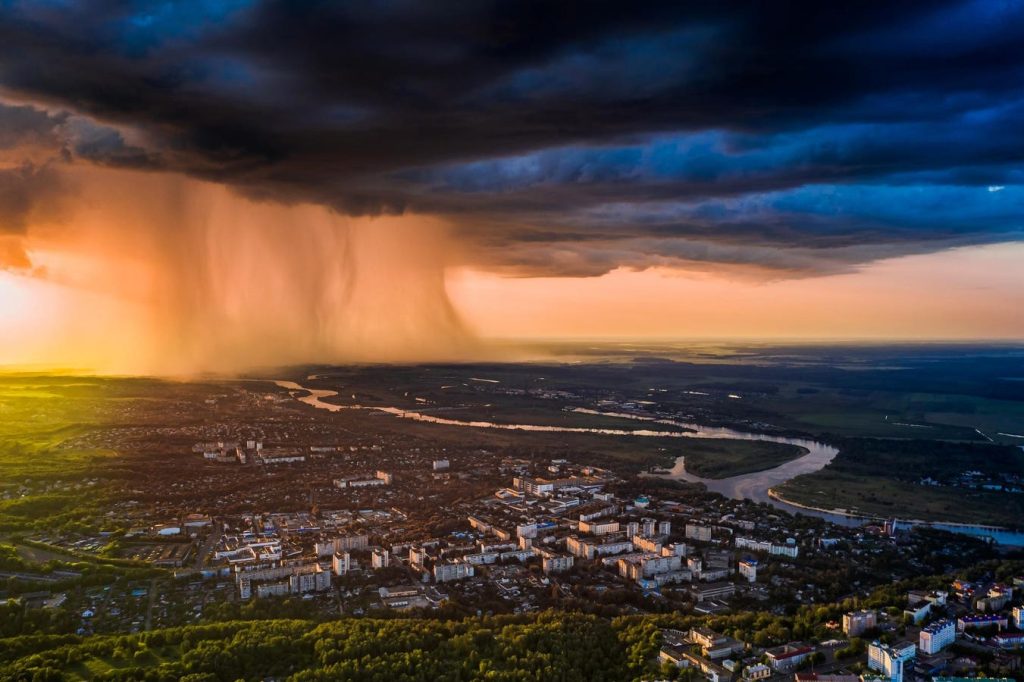The One Big Beautiful Bill, signed into law in early July, directly rolls back several core provisions of the Inflation Reduction Act, widely regarded as the most ambitious U.S. climate policy to date. According to Rhodium Group, the bill could cut the build-out of new clean power capacity by 53–59% between 2025 and 2035 and put over $500 billion in clean energy and transportation investments at risk.
As the rollback of U.S. climate provisions accelerate, we may one day look back and ask: what was the true price of that decision? Not politically. Not ideologically. But economically.
While the scale of the required investments might be daunting, the alternative – climate inaction – would unleash economic and societal damage on a far larger scale. Some of which we are already seeing now.
The Price Tag Of Transition: High, But Necessary
There’s no denying that the global energy transition will require unprecedented levels of investment. According to the IEA, annual investment in renewables must double, and investment in energy efficiency and electrification needs to almost triple within five years, in order to meet global climate targets and support the clean energy tripling goal by 2030 agreed at COP28. Reaching net zero by 2050 will require annual global clean energy investments to rise to $4.5 trillion by the end of this decade.
These numbers may seem overwhelming, however much of the spending replaces existing investment needs. Energy systems, transport networks, buildings, and industrial facilities all need ongoing reinvestment – whether it’s for clean systems or fossil-based ones. In fact, in 2025 alone, $1.1 trillion is still expected to flow into oil, gas, and coal globally.
So, the question isn’t whether we invest, but where we direct those investments.
Each $1 In Climate Action Can Save Up To $14 In Future Damages
More importantly, the upfront cost of climate action must be weighed against the immense losses it can avert. According to joint modelling by the University of Cambridge and Boston Consulting Group, investments in mitigation and adaptation of 1-2% of cumulative global GDP from 2025 to 2100 could avoid economic damages worth between 11-27% of cumulative global GDP over the same period. In other words, each dollar spent on climate action could prevent up to 14 dollars in future damages. Failure to act could mean losing up to 25% of future global GDP – three times the total health spending worldwide this century.
Even achieving a trajectory below 2°C would not eliminate damage altogether. However, this would limit losses to 2–4% of global GDP, which is much less than the 15–34% expected if temperatures were to rise by 3°C. That represents a permanent drag on global growth, magnified over time by compounding shocks and growing volatility.
These losses are not limited to immediate effects from extreme weather events but also include the knock-on effects of climate disruption: lower labor productivity due to heat stress, water scarcity undermining food and energy systems, rising sea levels and droughts forcing mass migration, higher mortality and disease burdens straining healthcare systems, destabilized trade routes, and mounting costs for governments, businesses and customers alike.
Climate Change Is Already Here – And Expensive
For some, it may be tempting to see these economic impacts as hypothetical – problems for future generations to solve. But that framing is outdated: the losses are already real and increasing.
Since the beginning of the century, climate-related disasters have caused over $3.6 trillion in damage globally. And the pace is accelerating. The economic cost of climate-related disasters has more than doubled since the early 2000s: from around $450 billion between 2000 and 2004 to over $1 trillion between 2020 and 2024. In 2023, global insured losses from climate-related events exceeded $100 billion for the fifth consecutive year.
In Europe, recent years have brought a series of record-breaking climate events. In Spain for example, this summer has already brought extreme heat, with temperatures exceeding 46°C. The prolonged heatwave triggered wildfires, power outages, hospital surges, and significant agricultural losses – with economic damages in Spain alone estimated at 1.4% of GDP.
The United States has had to cope with similar impacts. Estimates for Hurricane Helene, which devastated southeastern U.S. states in September 2024, suggest that this single event could be responsible for over $100 billion in damages, making it one of the costliest hurricanes in U.S. history.
These are not one-off events. They are early signals of what’s to come. As global temperatures continue to rise, the frequency and intensity of such disasters is projected to increase dramatically.
You don’t have to be an economist to grasp where this is heading – and what it will cost.
Climate Action Could Create 85 Million New Jobs by 2030
Yet the argument for climate action extends well beyond cost avoidance. Investments in clean energy yield returns through lower utility costs, increased efficiency, and greater energy independence.
The cost of key low-carbon technologies has fallen significantly over the past decade –especially solar power, wind, and batteries – and are expected to decline even further, while the margins that can be made with these technologies on energy markets are promising.
Additionally, climate resilience investments tend to generate strong economic returns. According to the World Economic Forum, companies that assess their climate risks and act on them report paybacks of $2 to $19 for every dollar invested, depending on the sector. From flood defenses to water-saving systems, climate adaptation investments regularly deliver returns that outweigh their initial costs.
The employment gains are equally compelling. The International Renewable Energy Agency estimated that 85 million new jobs could be created by 2030 in the clean energy transition. This exceeds the 12 million jobs expected to be lost in fossil fuel industries.
In a nutshell, investing in cleantech has economic potential.
Inaction Is Not An Option
Unmitigated climate change threatens the very pillars of economic stability. It would reduce productivity, increase poverty, and push fragile systems past their limits.
The investment case for climate action is clear: it is a fraction of the cost of inaction, it unlocks long-term savings, and it creates new jobs and industries. The missing ingredient is no longer data or models, but political will, courageous companies and financial mobilization at scale.
We face a choice: invest now in a cleaner, resilient future – or spend endlessly on the fallout of inaction.
Read the full article here









